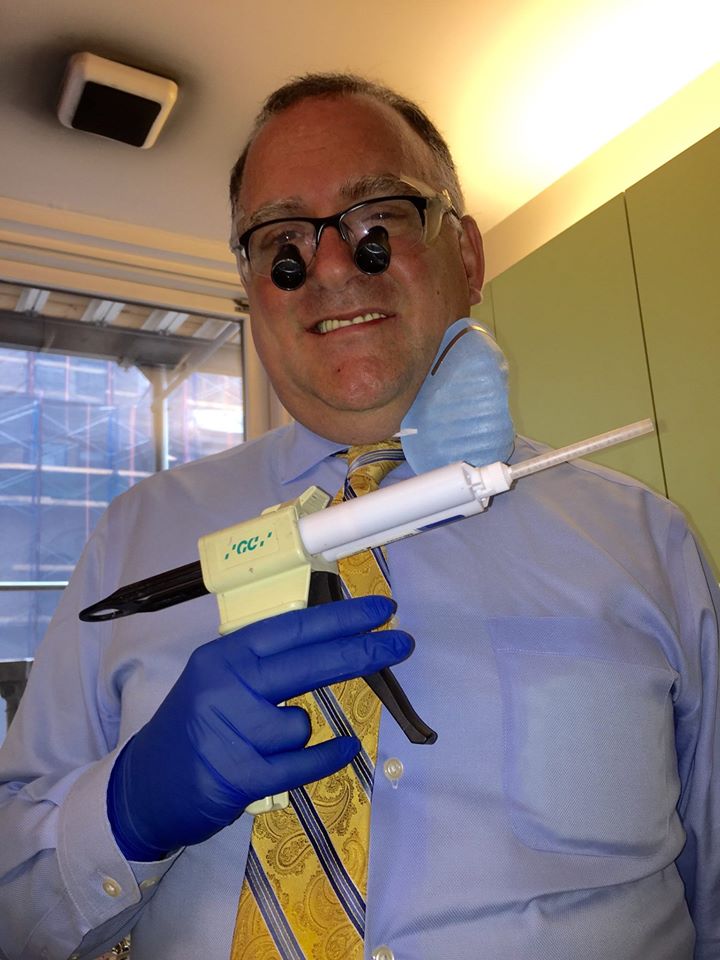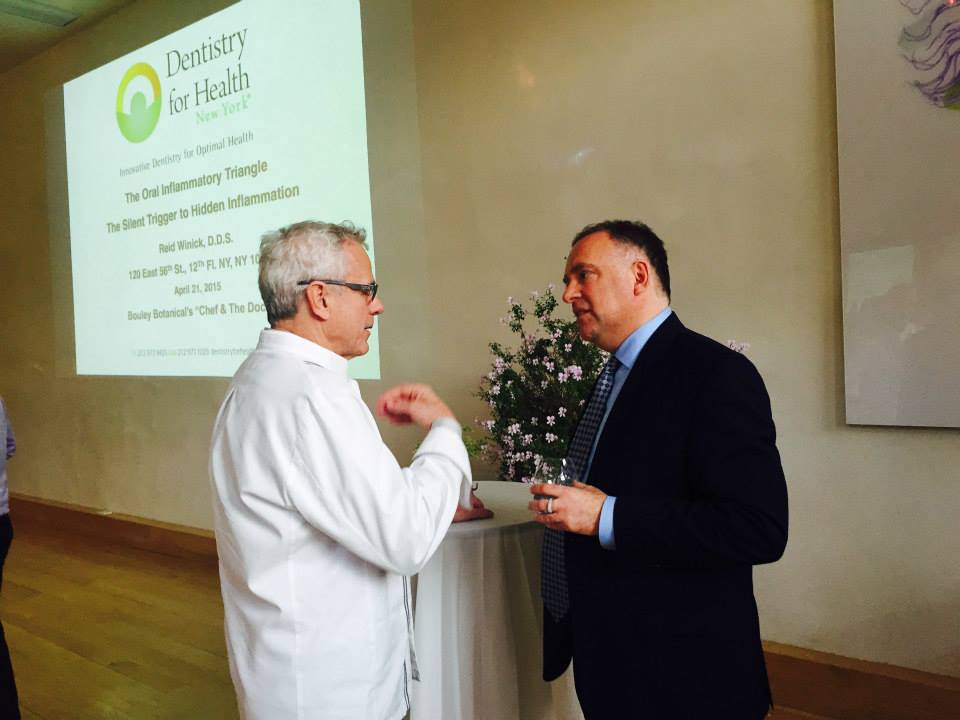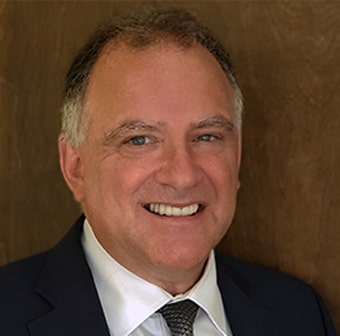Checkout Dr. Reid Winick, DDS Watch Video
Dr. Reid L. Winick, D.D.S. is a graduate of New York University College of Dentistry. He has extensive experience in general dentistry, the Oral Systemic Link, as well as in TMJ and craniofacial disorders. Dr. Winick is the founder and president of Dentistry for Health New York, a green and sustainable dental practice designed as a haven for overall wellness. He is committed to the environment and to the health and wellness of his patients’ mind, body, and spirit.
Being a national lecturer to medical doctors and other health care providers, patients from all over the US, seek out Dr. Winick’s personalized treatment systems for a second opinion regarding additional options in their treatment on how to save their teeth without painful gum surgery and extractions. Patients report that Dr. Winicks’ sustainable wellness programs have virtually elliminated the need for them to have periodontal surgery or the need for dental implants.
Dr. Winick is past co-founder and director of the Facial Pain/TMJ Clinic at NY Eye & Ear Infirmary. In addition, Dr. Winick is the co-founder of Herbal Difference organic products for treatment of periodontal wellness. He has completed numerous continuing education courses with an emphasis on TMJ & cervical dysfunction, neural therapy and biological dentistry. Dr. Winick also lectures, writes, and teaches on green dentistry, TMJ, head, neck & facial pain.
Laser Gum Therapy
Taking a plaque sample and looking under a microscope and salivary analysis for periodontal pathogens and your genetics, is critical to evaluating the patient’s status prior to treatment, and to monitor ongoing systemic and local treatment. Often, a patient’s mouth might look healthy with traditional dental analysis, while a microscope slide reveals an invasion of bacteria, white blood cells, amoeba, and other opportunistic organisms. An alarming 75% of American adults have some level of gum disease, and many don’t even suspect that they have it!
Unfortunately, most dentists do not use a microscope or salivary diagnostics and instead rely on traditional methods of assessing the periodontal health of the patient. This involves probing and measuring pocket depth. Anything greater than 3 millimeters of depth is usually an indication of a problem.
Another indication that most dentists consider as proof of periodontal disease is bleeding that appears when probing. But what this is really indicating, is capillary fragility. Although bleeding gums may be an indication of periodontal disease, it may also be present for other reasons, such as low levels of vitamin C, mercury fillings, hormonal imbalances, diet, or birth control pills and other prescription drugs.
Amalgam Removal
Amalgam fillings are very wrong because they are made up of 50% mercury— the most toxic non-radioactive material known to man. Evidence is mounting that they cause memory loss, mood swings and other serious health problems. Mercury amalgam fillings are not only toxic to the body, but also to the environment and have been banned in Norway, Denmark, and Sweden.
Finally, more dentists are now providing alternatives to amalgam fillings and removing and replacing the old ones. However, while every dentist is trained in dental school to remove amalgam fillings, only a very few use safety devices such as a rubber dam, special suction equipment, and negative ion generators to remove the toxic vapor as it’s released into the atmosphere.
At Dentistry for Health NY, we are among the pioneers who started the mercury-free filling trend rather than following it. We provide the safest mercury removal procedures and the most biocompatible materials for filling cavities, crowns and dental aesthetics.
Pediatric Dentistry
In pediatric dentistry, as in general medicine, the dentist’s mission is not only to cure existing disease but also to prevent it from occurring. For many years Dr. Lucia Birkenfeld, a Board Certified Pediatric Dentist and a Diplomat of the American Academy of Pediatric Dentistry, has been involved in research projects that explore prevention of1 tooth decay and gum disease in children.
In Dentistry for Health New York, we educate children and parents to promote healthy oral hygiene, diets, and lifestyles. We consider these aspects of pediatric dentistry as important as the actual preventative and procedural measures we perform. In our office, we explore the most advanced information pertaining to oral health in children. We implement this knowledge and provide personalized treatment to each child based upon his or her specific needs.
We are pleased to offer pediatric dentistry to our family of holistic patients. We are proud to welcome Doctor Lucia Birkenfeld to our practice. She is a graduate of Hebrew University’s Hadassah School of Dental Medicine, and has over 28 years of experience in dentistry. Dr. Birkenfeld specializes in Pediatric Dentistry, and will be accepting patients beginning in January 2007.
Dr. Birkenfeld has been practicing pediatric dentistry for over two decades, both in private practice and as an Assistant Professor in the Department of Pediatric Dentistry at both New York University’s College of Dentistry and Hadassah School of Dental Medicine. She has held positions throughout the world, including Germany and Israel.
Diabetic Dental Care
At Dentistry for Health NY, the cornerstone of our practice is the oral systemic link, meaning that your teeth and gum health are linked to your overall body health and vice versa.
This is especially important for people with diabetes. Diabetes can affect the quality of your gums and teeth, and the reverse is also true— that poor gum and teeth care can affect the worsening of your diabetes control, and as a result affect the health of your entire body. Numerous studies have linked diabetes to periodontal disease, tooth loss and bone loss, mouth ulcers, and cavities. Most importantly, the studies have shown that poorly controlled diabetics respond differently to bacterial plaque at the gum line than well-controlled diabetics and non-diabetics.
Gum infections can impair a diabetic’s ability to process and/or use insulin, which may cause the diabetes to be more difficult to control and the periodontal infection to be more severe, resulting in a greater loss of bone and connective tissue.
There is a very close connection between your dental care and the worsening or improvement of your ability to successfully control your blood sugar levels. And while blood sugar control may be the single most important step in managing diabetes and preventing gum disease among diabetics, serum triglycerides are also important risk factors.
How Does Holistic Dentistry Differ From Traditional Dentistry?
A holistic practitioner’s realm encompasses everything associated with your overall health -- including the oral health area on which traditional dentists concentrate. By focusing on the whole patient, and not just specific symptoms, some real differences emerge in how a Holistic Dentist approaches diagnosis, treatment, and practice.
Holistic practitioners stress the importance of preserving teeth--even those a traditional dentist might have suggested removing!
Holistic dentists use fewer surgical procedures. Instead, they strive to prevent future cavities and gum disease.
A holistic dentist will suggest certain foods to eat or to avoid to improve tooth and gum health. By taking the time to talk with you about your individual lifestyle and diet, they’re able to recommend any specific changes that might bring oral health benefits.
With a strong concern about patient safety, most holistic dentists use digital, low-radiation x-rays, which require only minimal exposure.
A holistic dentist will carefully screen all dental materials used to make sure they suit each patient’s unique immune system.
In a holistic dental office, you may find filtered, purified water and special air cleaners. Some practitioners even go so far as to design their treatment areas to protect patients who may have allergies, and to extensively utilize the therapeutic benefits of sunlight.
Finally, most holistic dentists want to help their patients relax and experience none of the unpleasant elements that have made so many people dread visiting a dentist. We strive to create a supportive and welcoming environment – a place where you can feel safe in the knowledge that your total health is our primary concern.
Actually, choosing a holistic dentist is part of assembling a skilled, experienced team to provide the kind of treatment that you have selected, whether it’s amalgam removal or general dental services. Since you’re choosing this path for your health care, you should consider other holistic practitioners such as a nutritionist, specially trained MD, DO or Chiropractor; and a lymphatic massage therapist.
What If I Find Out I Have “Mercury Toxicity”?
During examinations by a skilled holistic dentist, some patients will learn that they have “mercury toxicity.” If it turns out that you’ve developed this condition, the best first step you can take is to educate yourself about the issues of mercury exposure. Read, talk to people, and ask questions to gain some basic knowledge before you make any significant decisions about your treatment.
Here’s a key fact you’ll learn in your research:
Detoxification should not begin before the source of mercury is removed.
But do not start to remove the mercury until you learn what is needed to safely and properly remove this element, once you feel certain that you would prefer to replace your amalgams with safer materials.
Then, make sure your dentist begins your detoxification program two to three weeks before starting the amalgam removal process.
But First A Note Of Caution: Be leery of any dentist who wants to remove your amalgam fillings immediately if you are found to already have mercury toxicity.
It is true that the longer the source of mercury remains in place, the more accumulated damage is possible. But it’s even more important to proceed with extra care.
Do not rush into beginning your amalgam removal program before you’ve taken precautions to protect yourself throughout the process. An intricate protocol is needed to assure your safety while the mercury source is being removed and any dental fillings, crowns, etc. are being replaced with biocompatible materials.
After the procedures, a skilled practitioner will take all the required steps to detoxify your body by removing all remaining mercury from your system.
What is Holistic Dentistry?
“Holistic Dentistry” – A specific, organic approach to dental care that views oral health as merely one part of the patient’s overall well-being.
Here’s the bottom line: a Holistic Dental Practitioner combines modern dental techniques with proven, long-established traditions of natural healing.
Dentists who have chosen the holistic approach have the same degrees and training as traditional dentists. But they don’t stop there.
Holistic practitioners focus on long-term preventive care and prefer to use non-invasive procedures whenever possible. For example, experienced holistic practitioners stress the importance of strengthening the immune system to help fight infection – including oral and periodontal infections.
We believe that the body can maintain itself in a constant state of health if given the right tools, which include nutrition and biochemistry.
What Sort Of Treatment Schedule Should I Expect When Working With a Holistic Practitioner?
Once you select the holistic dentist to treat you, the procedures and their sequence will seem very different from traditional dentistry. Here are some things you’ll probably experience as your treatment begins.
Plan your treatment jointly with as many different health providers as you and your dentist feel are optimal for your overall health. Choose the physician, lymphatic massage therapist, nutrititionist, detoxification doctor or other health professionals so that the timing of their services work well with each other, and do not interfere with the final results of your dental treatments.
If examinations and discussions determine that your treatment will include removal of amalgam fillings, nickel crowns, and root canal effects, be sure to arrange appointments for all of the “removal procedures” within a time frame of one month, or less, if at all possible. Your treatments should be at least 48 hours apart.
Your dentist will work with you to set up an appointment schedule in accordance with the 7-14-21 day immune cycles. Heeding this cycle will help you avoid the danger of developing an auto-immune condition you would not have had otherwise.
If you’ll need restorations, your dentist will take electrical readings on all your fillings and crowns to determine the best sequence and timeline.
From the available detoxification procedures your dentist describes, select the one most acceptable to you. Be careful to find the balance between adequate and overdoing. For most people, two to three procedures per week is about right. Don’t be in too big a rush and try to do six to seven a week – that’s just overdoing it for almost anyone.
Note: The biggest potential problem of dental revision is too much detoxification too fast. This advice encompasses detoxification medications as well as FAR-Infrared Saunas, etc. Get as much information as you can before you make your selection.
Start your nutritional program, based on your consultations, as soon as it’s feasible in your program.
Finally, observe your patient protection protocol as closely as possible during your removal procedures.





